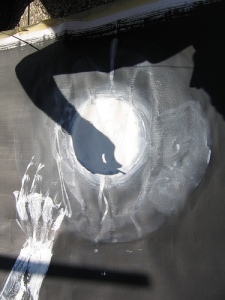 Some gems on writing poetry whether you are just getting started or an old hand needing inspiration and direction…
Some gems on writing poetry whether you are just getting started or an old hand needing inspiration and direction…
Writing the Life Poetic: An invitation to read and write poetry – Sage Cohen
Poetry is often seen as a rarefied art on the fringes of life; even when you are a poet yourself, you can feel like this. Sage Cohen’s Writing the Life Poetic takes poetry from any pedestal it might have ended up on, and brings it firmly back into the central context of your life. The book is beautifully written and gorgeous to hold, with quirky graphics through-out. It feels like you are being taken by the hand and gently led back to the heart of poetry and its rightful place for you. As Sage points out in the introduction:
Poetry gives us an opportunity to experience our lives twice. First, as it happens, in real time. And second, in heart time. The poem gives us a kind of cosmic canvas to savour a moment, make sense of it, put a little frame around it, and digest our experience more completely.
Especially for people who love poetry and might have lost it somewhere along the way, Writing the Life Poetic helps you discover or rediscover the power of poetry, its place in everyday life and how to engage practically with this creative space. The book is full of advice such as starting where you are, showing versus telling, working with the senses, using imagery, reading poetry, understanding how stanzas work, revision, writing rituals, creating a system for poetry practice and so much more. Each chapter is short and focused with exercises to practically apply the skills and concepts discussed. It’s like a sensitive guidebook to take you through a deep engagement with poetry from wherever you are starting or recommencing your journey.
Writing Personal Poetry: Creating poems from your life experiences – Sheila Bender
I found this brilliant book in my local library and then had to have it so I could read it more fully and over time. The introduction ‘Poetry is always a good idea’ had me saying, ‘Yes, yes!’ as I read through. Sheila quotes poet Louise Gluck saying that:
writing a poem begins with a haunting, as if the finished poem already exists somewhere. In this way…the poem is like a lighthouse, “except that, as one swims toward it, it backs away.”
Coming from a similar space as Sage Cohen, Sheila Bender situates poetry in the context of daily life, commenting that poets also ‘cook, clean and take out the garbage..’ and then identifies how finding that writing about the ‘lighthouse-that-already-is’ can be part of this daily life.
Sheila’s focus is personal poetry, why we write it, how to empower yourself to write, acknowledging your poetic intelligence, getting the confidence to start, the value of reading poetry, tools for writing poetry and the poet’s stance. There are some excellent poems in progress included in this book from Sheila’s students’ work. They show how a poem progresses from an idea to a draft to a revision to a fully realised piece of work. I loved these students’ poems and what they showed about the progress and realisation of their art. There is much to be learnt from this book: especially heart for the journey and specific processes and techniques for writing personal poetry.
Creating Poetry – John Drury
Creating Poetry is a little more technical in approach and this a useful complement to the above two books. It’s an accessible introduction to poetic terms like metaphor, assonance, simile, alliteration, rhyme and enjambement. These terms are explained with clear examples. The book also provides an excellent summary of poetic forms and rhyming patterns: ghazal, haiku, pantoum, sestina, villanelle and sonnet, for example, again clearly set out and explained.
The book takes you through the stages of preparation, language, the senses, shaping, patterns and traditions, voice, sources of inspiration and the revising and finishing processes. Full of practical exercises that help you engage as you read, the book is an accessible reference for the more technical side of writing poetry.
All three of these books have a central place on my poetry writing bookshelf and are heavily underlined. They are guidebooks I visit regularly to help me orient my poetic journey, to keep me moving positively ahead and to ensure I have courage and skills for the writing process.
What are your recommended guidebooks for writing poetry?
Image by alexschwab from flickr and used under a Creative Commons license with thanks: One poem of thousands located on the longest poetry wall in the world in Changde, Hunan Province, China.
![]()




